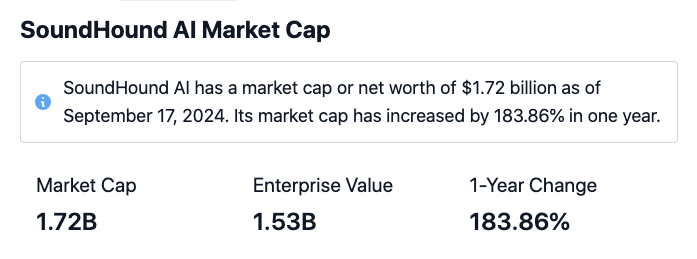20 New Reasons For Deciding On AI Stock Analysing Sites
20 New Reasons For Deciding On AI Stock Analysing Sites
Blog Article
Top 10 Suggestions For Assessing The Quality Of Data And Sources For Ai Trading Platforms That Predict/Analyze The Prices Of Stocks.
To ensure accurate and reliable information, it is crucial to assess the accuracy of data sources as well as AI-driven stock trading platforms. Insufficient quality data can lead to flawed predictions, financial losses, and a lack of trust on the platform. Here are 10 best tips to evaluate data quality and source:
1. Verify the Data Sources
Check the origin of the data Ensure the data source is trustworthy and well-known data suppliers (e.g., Bloomberg, Reuters, Morningstar, or exchanges like NYSE, NASDAQ).
Transparency: The platform needs to be transparent about the sources of its data and update them regularly.
Avoid single-source dependencies: Reliable platforms often aggregate data from multiple sources to minimize the chance of errors and bias.
2. Check the Freshness of Data
Data in real-time or delayed format: Decide if a platform is able to provide real-time data or delayed. The availability of real-time data is vital for trading that is active. Data that is delayed can be sufficient to provide long-term analysis.
Check the update frequency (e.g. minute-by-minute updates and hourly updates, or daily updates).
Historical data accuracy - Make sure that the historical records are constant and do not have any gaps or anomalies.
3. Evaluate Data Completeness
Find missing data. Look for any gaps in the historical data, missing tickers, and financial statements that are not complete.
Coverage: Make sure that the platform covers a wide selection of stocks, indices, and markets that are relevant to your strategy for trading.
Corporate actions: Ensure that the platform can be able to account for splits in stock or dividends. Also, check if it accounts for mergers.
4. The accuracy of test data
Cross-verify your data: Check the data of your platform against other reliable sources.
Error detection - Search for outliers and incorrect prices or financial metrics that have not match.
Backtesting. Make use of old data to test your trading strategy and see whether it's in line with your expectations.
5. Measure Data Granularity
Detail You should obtain granular information including intraday volumes and rates, bid/ask spreads as well as order books.
Financial metrics - Make sure to check whether there is a detailed financial statement (income statements and balance sheets, as well as cash flows) and key ratios included (P/E/P/B/ROE etc.). ).
6. Make sure that the data processing is checked and Cleaning
Normalization of data is crucial for ensuring consistency.
Outlier handling: Check the way your platform handles anomalies or data that's outliers.
Incorrect data: Check to see if your platform uses reliable methods when filling in the missing data.
7. Verify data consistency
All data should be aligned with the same timezone. This will avoid discrepancies.
Format consistency: Verify that the data has been presented consistently (e.g. units, currency).
Cross-market compatibility: Ensure that the data of different exchanges or markets are harmonized.
8. Relevance of Data
Relevance to your strategy for trading: Check that the data you are using is compatible with your trading style (e.g. technical analysis, qualitative modeling or fundamental analysis).
Features Selection: Find out whether the platform has pertinent features, like economic indicators, sentiment analysis and news information which can improve forecasts.
Examine the integrity and security of your data
Data encryption: Make sure the platform is using encryption for data transmission and storage.
Tamper-proofing (proof against the possibility of tampering) Verify to be sure the data was not altered or manipulated by the computer.
Conformity: Determine if the platform complies with laws on data protection (e.g. GDPR or CCPPA, etc.).).
10. Test the platform's AI model transparency
Explainability: Make sure the platform gives you insights on the AI model's use of data in making predictions.
Bias detection: Determine whether the platform is actively monitoring and mitigates biases in the data or model.
Performance metrics: Examine the platform's track record and performance metrics (e.g. accuracy and precision, recall) to determine the accuracy of its predictions.
Bonus Tips
User feedback and reviews Utilize user reviews and feedback to determine the reliability of a platform as well as the quality of its data.
Trial period. You can use the trial period to test the features and data quality of your platform prior to deciding to decide to purchase.
Customer support - Make sure that the platform has the capacity to provide a solid customer support in order to resolve any data-related problems.
If you follow these guidelines, you can better assess the accuracy of data and the sources of AI platform for stock predictions and make sure you are making informed and reliable trading decisions. See the top click here for best stock analysis app for website tips including ai for investing, ai for investing, ai for stock trading, best ai copyright, ai investing app, stock predictor, stock analysis app, ai bots for trading, stock market ai, free ai investing app and more.
Top 10 Ways To Evaluate The Risk Management Of Ai-Based Stock Trading Platforms
A trading platform that utilizes AI to forecast or analyze stocks must be equipped with a strong risk management system. This will protect your investment capital and minimize any potential losses. A platform that is equipped with powerful tools for risk management can help navigate volatile markets and allow users to make better decisions. Here are the top ten tips to evaluate the risk management capabilities of these platforms.
1. Evaluate Stop-Loss and Take-Profit Features
Configurable settings: Ensure that you set your take-profit or stop-loss level for a specific trade.
Find out if your platform supports trailing stop which automatically adjusts when the market shifts towards your.
Make sure your platform allows you to make stop-loss orders that guarantee the closing of the trade at the amount specified, even on volatile markets.
2. Assessment Position Sizing Tools
Fixed amount. You should have the option to define your position sizes as the fixed dollar amount.
Percentage portfolio: Determine if the risk is manageable in a proportional way by setting your positions according to centage of your overall portfolio.
Risk-reward: Check if your platform permits you to set risk-reward for each strategy or trade.
3. Look for Diversification Support
Multi-asset trading. Check that your platform supports various asset classes, including ETFs as well as Forex, Options and Stocks.
Sector allocation: Find out if the platform provides tools for monitoring and managing the exposure of sectors.
Geographic diversification: Verify if the platform supports trading in international markets in order to spread geographical risk.
4. Review leverage and margin controls
Margin requirements - Make sure that the platform clearly explains the requirements for margins clearly.
Make sure your platform lets you to limit leverage to control the risk of exposure.
Margin Calls: Make sure that the platform has sent prompt notifications of margin calls to stop account liquidation.
5. Assessment Risk Analytics and reporting
Risk metrics: Make sure whether your platform contains key risk metrics including Sharpe ratio, and Drawdown to help you manage your portfolio.
Evaluation of scenarios: Make sure the platform you're using allows you to simulate market scenarios and evaluate risk.
Performance reports: See whether the platform has comprehensive performance reports, which include risk-adjusted returns.
6. Check for Real-Time Risk Monitoring
Portfolio monitoring: Ensure the platform allows real-time monitoring of your portfolio's risk exposure.
Alerts & notifications: Verify the system's capability to provide immediate warnings about events that may be risky (e.g. breached margins, Stop losses triggers).
Risk dashboards: See whether the platform provides customizable risk dashboards to provide an extensive overview of your risk profile.
7. Evaluation of Backtesting and Stress Testing
Test for stress: Ensure that the platform will allow you to test your strategies or portfolios during extreme market conditions.
Backtesting - Check to see whether your platform permits you to backtest your strategies using old data. This is an excellent method to gauge the risk and evaluate the performance.
Monte Carlo simulations: Verify whether the platform utilizes Monte Carlo simulations to model possible outcomes and assess risks.
8. Risk Management Regulations: Assess the compliance
Regulation compliance: Ensure that the platform complies with relevant regulation on risk management (e.g., MiFID II in Europe, Reg T in the U.S.).
Best execution : Check to see if your platform follows best execution procedures. This guarantees that trades will be executed at the most efficient price, minimising the chance of slippage.
Transparency - Check to see whether the platform has disclosed the risks in a clear and transparent way.
9. Look for risk parameters that are User Controlled
Customized risk rules: Check that your platform allows you create custom risk management guidelines (e.g. the maximum daily loss, or maximum size of the position).
Automated Risk Controls Find out if the platform is able to automate the enforcement of the risk management policy that are based on parameters pre-defined.
Check whether the platform permits manual overrides for automated risk control.
10. Review User Feedback and Case Studies
User feedback: Use user reviews to determine the platform's capacity to take care of the risks.
Case studies Look up cases studies or testimonials that show the ability of the platform to manage risks.
Community forums Find out if there is an active group of traders who share tips and strategies to manage risk.
Bonus Tips
Trial period: Take advantage of a demo free or trial period to try the risk management capabilities of the platform in realistic scenarios.
Customer support - Make sure that your platform provides a solid assistance for any questions or issues concerning risk.
Educational resources: See whether the platform has education resources or videos on best practices in risk management.
Follow these tips to assess the risk-management abilities of AI trading platforms that predict/analyze stock prices. Choose a platform with a high quality of risk-management and you'll be able to limit your losses. For trading success and to make sense of volatile markets, reliable risk management tools are vital. Check out the top rated best ai stocks to buy for blog advice including investing in ai stocks, ai stock trading bot free, trading ai bot, ai stocks to invest in, investing in ai stocks, ai investing app, best ai trading app, trading ai, best ai for stock trading, best ai stock and more.